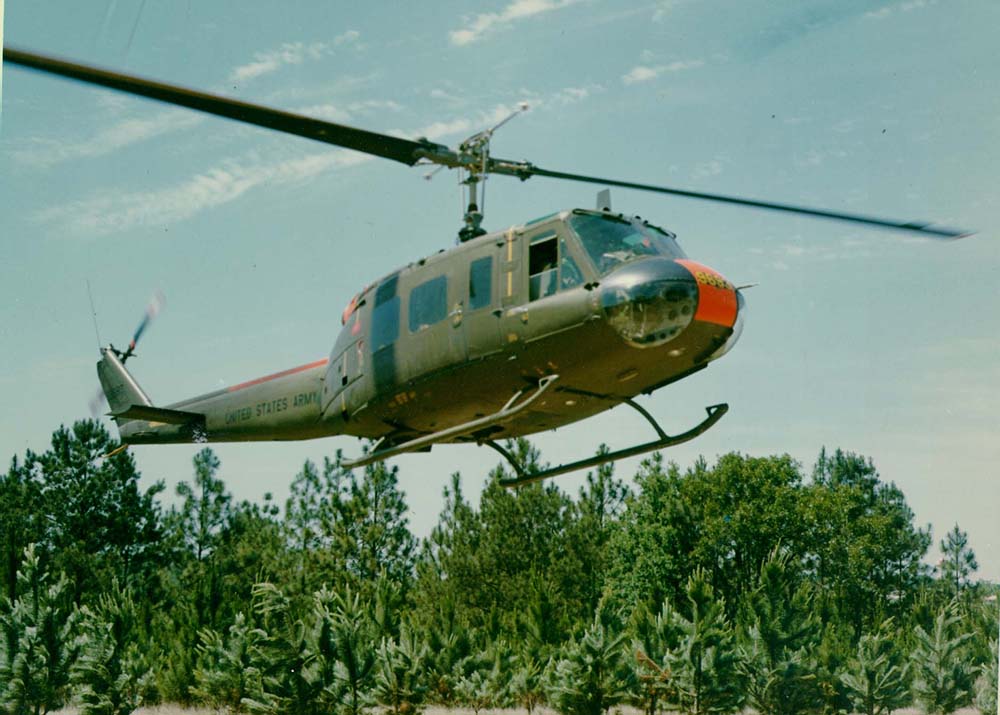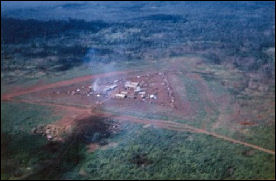 Tragedy
to Triumph
Tragedy
to Triumph| Home |
Before
X-Ray |
Ia
Drang |
Ia
Drang's Influence |
Bibliography |
Before X-Ray
Battles don’t just happen. Many things influence a battle, and Ia Drang was not an exception.
|
The 1st
Cavalry Division is Born In 1957, Lieutenant General James M. Gavin came up with the idea of helicopters ferrying infantry into battle. His dream came true in 1963 when Secretary of Defense Robert S. McNamara created the 11th Air Assault Division (Test). Brigadier General Henry W. O. Kinnard was the commander of the test division, and remained in that position until 1966. The 11th Air Assault Division (Test) trained together for about two years before being transferred to the 1st Cav. Div. When that happened, Gen. Kinnard asked that his two battalions fly the colors of the 7th Cavalry, formerly General Custer's regiment. Lieutenant Colonel Harold Moore was given command of the 1st Battalion. |
 UH-1D Huey. This type was
used by the 1st Cav. in Vietnam (Vietnam Studies: Airmobilty 1961-1971) |
|
Into
The 1st
Cavalry Division arrived in |
|
|
The
Siege at Plei
Me In
late October, 1965, the Vietcong
began a siege of the Plei Me Special Forces Camp. The siege only lasted about an
hour, but it sparked a triumphant 35 day campaign in the Ia Drang Valley, a river
valley
between Pleiku and the Cambodian border. General Kinnard’s
orders for the
campaign were to find the enemy and destroy it. The 1st
Cav. began
the campaign blindly striking around the valley, but didn’t
find any enemy
whatsoever. It was then that Hal Moore pointed out to Gen. Kinnard a
large
Vietcong camp in an area that had not yet been searched, and One factor that may have been the difference between triumph and tragedy was the landing zone the troops were landed at. There were three clearings that could have been used, Landing Zone (LZ) X-Ray, LZ Tango, and LZ Yankee. X-Ray and Yankee could accommodate 6-8 helicopters at a time, whereas Tango could only handle 2-3. Hal Moore finally decided on X-Ray over Yankee for a couple reasons: LZ Yankee was on sloped ground, it was covered in old tree stumps, and X-Ray was possibly big enough for 1 or 2 more helicopters. Also, LZ Yankee was about a mile south of the valley. |
 Plei Me Special Forces Camp
(weweresoldiers.net) |